8. Open source hardware: from fibers to fabric#
introduction#
I played around with knitting toys which I could hack somehow.
knitting machine#
Its package says “recommended 6+.” Seriously?!? It’s difficult to move a carriage properly. I wonder I could move a carriage with a stepper motor, but it’s too difficult for me.

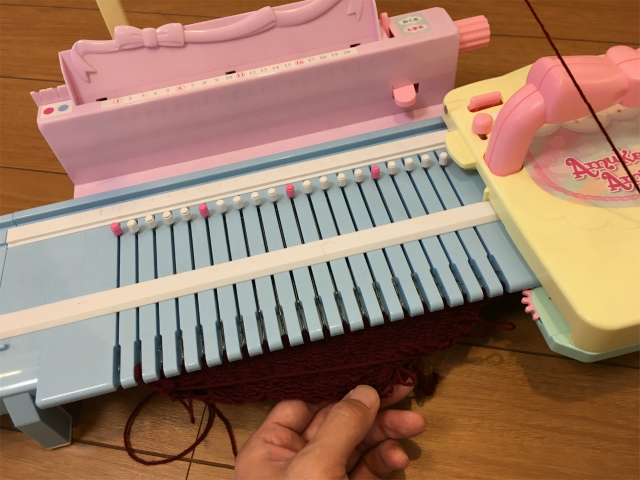
knitting loom#
I wanted to have this when I was a kid.

spool knitter#
I can make a cord by simply cranking a handle. Rotating a handel was bit tiresome, so I wanted it to be automated.

anatomy of a spool knitter#
First, I disassembled a spool knitter to understand how it works.
I could easily detach a handle from a body.
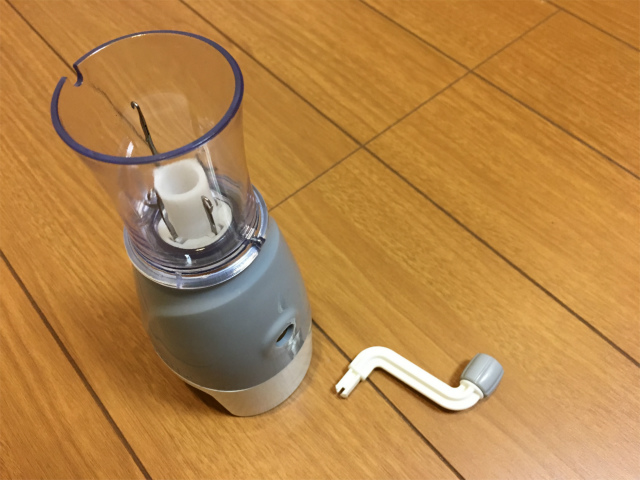
There is a outlet from which yarn will come out. I removed screws.

The anatomy of a spool knitter is very simple, but beautiful. Inside a body, A bevel gear transforms the rotation of cranking a handle to that of a spool.
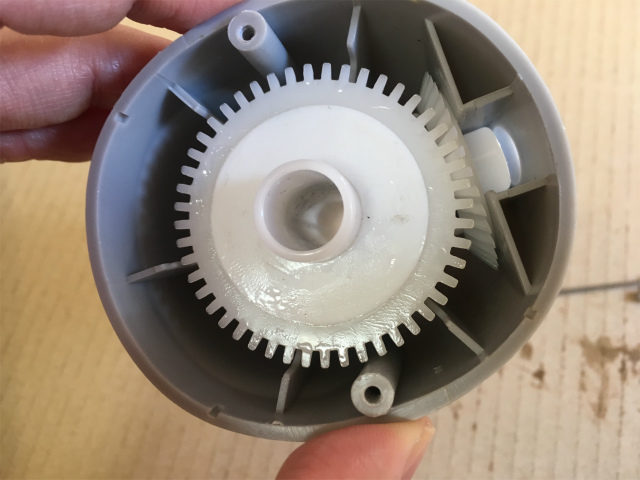
After I remove a ring-shape fixture, I could take out needles from a body. Lubricant was all over the place. Greasy.
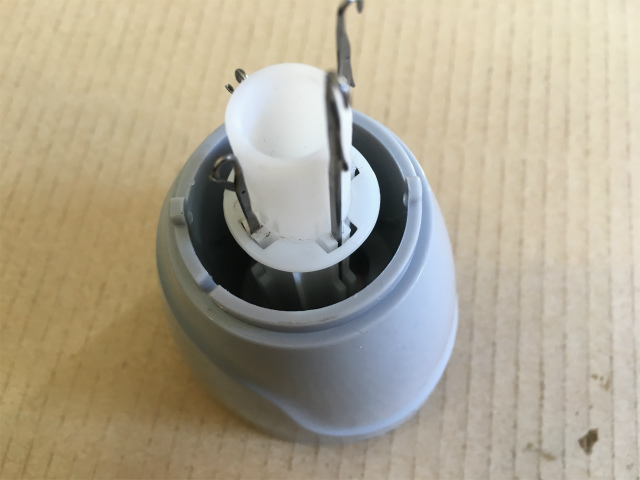

A cross-section is cut by a plane with an angle to the axis of a cylindrical body. Needles make an up-and-down movement with rotating along the tilted oval.

All parts of a spool knitter.
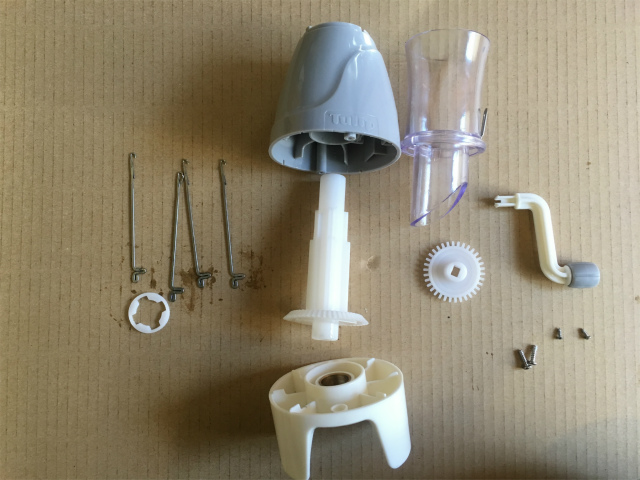
automation#
As cranking a handle is tiresome, I wanted it to be automated. Saverio used a stepper motor last year, so I tried other way, a continuous rotation servo.
I designed a connector between a servo and a hole of a cranking handle.


Here’s the result.
look ma, no hands!#
Holding a servo with my hand is not pretty, so I designed a box to fix a spool knitter and a servo. Kai, a member of FabLab Kamakura, gave me a lot of design tips. It was quite helpful.
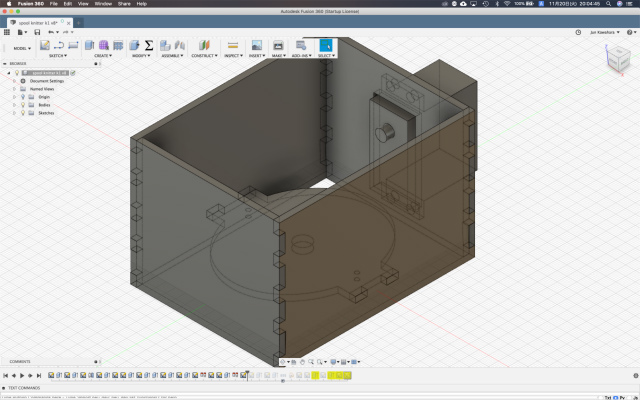
I used an add-in, NESTER, to lay parts out flat in Fusion 360. I saved the laid out sketch as a DWF format and used it for laser-cutting.
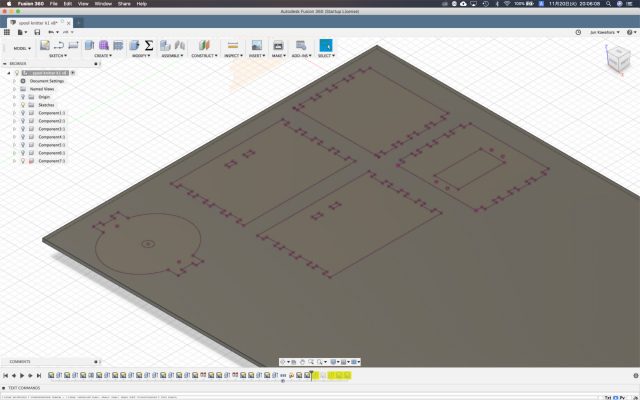
I modified a connector design for a bigger servo.
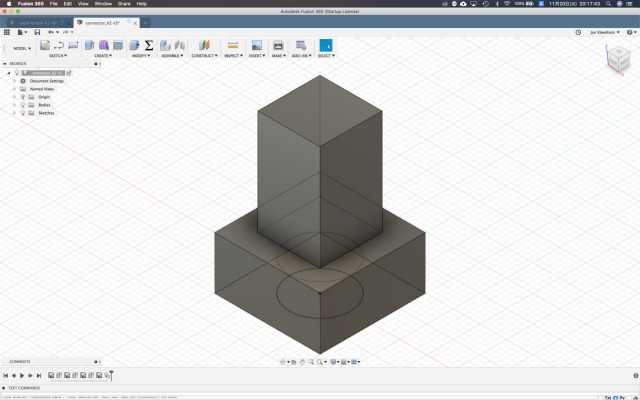
Test for a servo rotation. Schematic is shown below.

I placed a plate with a hole so that a bevel gear won’t come off.
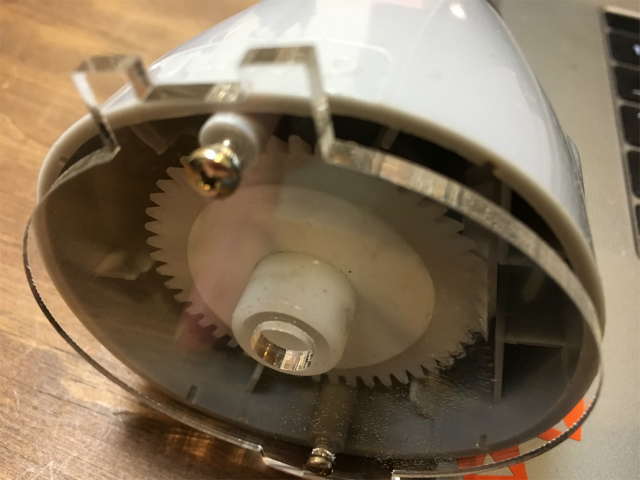
The original (right) and a hacked one(left).
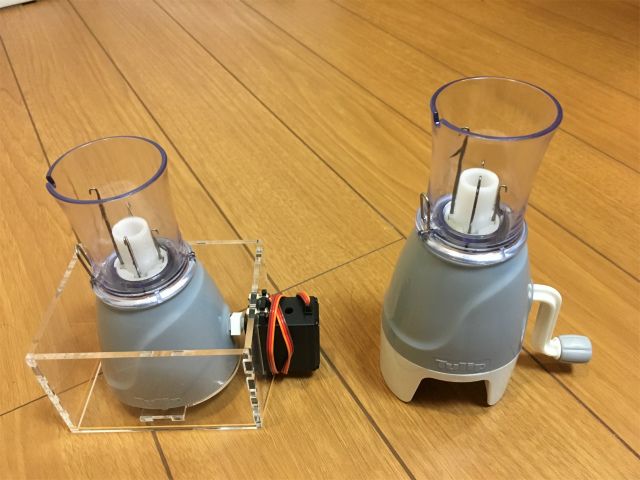
Here is a movement test.
And outputs.

A cord filled with a flexible wire.

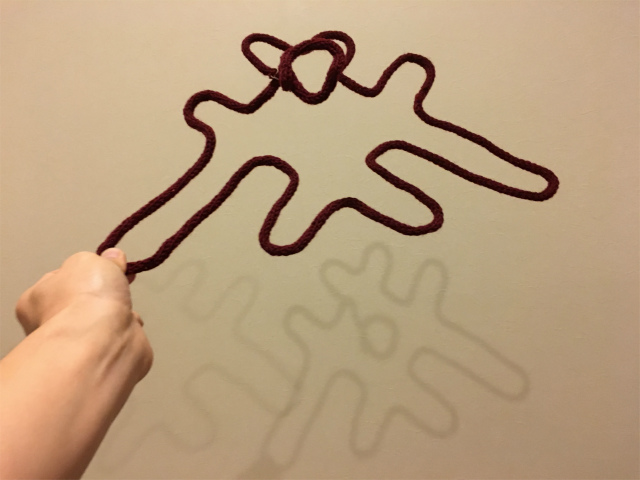
code#
#include <Servo.h>
Servo servo;
void setup(){
servo.attach(3);
Serial.begin(9600);
}
void loop(){
int val=analogRead(0);
Serial.println(val);
int angle=map(val,0,678,0,180);
Serial.println(angle);
servo.write(angle);
}
files#
- box 3d design file (.f3d)
- box 2d lay out for laser-cutting (.pdf)
- 3d design(.f3d) and an stl file
- arduino code(.ino)
references#
- FEETECH FT90R Digital Micro Continuous Rotation Servo - Pololu Robotics & Electronics
-
FEETECH Continuous Rotation Servo FS5106R - Pololu Robotics & Electronics